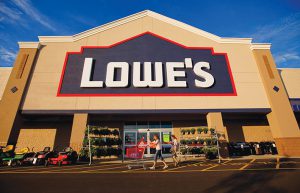",{title:e.element.attr("title")});return e.disabled&&this._addClass(i,null,"ui-state-disabled"),this._setText(s,e.label),i.append(s).appendTo(t)},_setText:function(t,e){e?t.text(e):t.html(" ")},_move:function(t,e){var i,s=".ui-menu-item";this.isOpen?i=this.menuItems.eq(this.focusIndex).parent("li"):(i=this.menuItems.eq(this.element[0].selectedIndex).parent("li"),s+=":not(.ui-state-disabled)"),(s="first"===t||"last"===t?i["first"===t?"prevAll":"nextAll"](s).eq(-1):i[t+"All"](s).eq(0)).length&&this.menuInstance.focus(e,s)},_getSelectedItem:function(){return this.menuItems.eq(this.element[0].selectedIndex).parent("li")},_toggle:function(t){this[this.isOpen?"close":"open"](t)},_setSelection:function(){var t;this.range&&(window.getSelection?((t=window.getSelection()).removeAllRanges(),t.addRange(this.range)):this.range.select(),this.button.trigger("focus"))},_documentClick:{mousedown:function(t){this.isOpen&&(V(t.target).closest(".ui-selectmenu-menu, #"+V.escapeSelector(this.ids.button)).length||this.close(t))}},_buttonEvents:{mousedown:function(){var t;window.getSelection?(t=window.getSelection()).rangeCount&&(this.range=t.getRangeAt(0)):this.range=document.selection.createRange()},click:function(t){this._setSelection(),this._toggle(t)},keydown:function(t){var e=!0;switch(t.keyCode){case V.ui.keyCode.TAB:case V.ui.keyCode.ESCAPE:this.close(t),e=!1;break;case V.ui.keyCode.ENTER:this.isOpen&&this._selectFocusedItem(t);break;case V.ui.keyCode.UP:t.altKey?this._toggle(t):this._move("prev",t);break;case V.ui.keyCode.DOWN:t.altKey?this._toggle(t):this._move("next",t);break;case V.ui.keyCode.SPACE:this.isOpen?this._selectFocusedItem(t):this._toggle(t);break;case V.ui.keyCode.LEFT:this._move("prev",t);break;case V.ui.keyCode.RIGHT:this._move("next",t);break;case V.ui.keyCode.HOME:case V.ui.keyCode.PAGE_UP:this._move("first",t);break;case V.ui.keyCode.END:case V.ui.keyCode.PAGE_DOWN:this._move("last",t);break;default:this.menu.trigger(t),e=!1}e&&t.preventDefault()}},_selectFocusedItem:function(t){var e=this.menuItems.eq(this.focusIndex).parent("li");e.hasClass("ui-state-disabled")||this._select(e.data("ui-selectmenu-item"),t)},_select:function(t,e){var i=this.element[0].selectedIndex;this.element[0].selectedIndex=t.index,this.buttonItem.replaceWith(this.buttonItem=this._renderButtonItem(t)),this._setAria(t),this._trigger("select",e,{item:t}),t.index!==i&&this._trigger("change",e,{item:t}),this.close(e)},_setAria:function(t){t=this.menuItems.eq(t.index).attr("id");this.button.attr({"aria-labelledby":t,"aria-activedescendant":t}),this.menu.attr("aria-activedescendant",t)},_setOption:function(t,e){var i;"icons"===t&&(i=this.button.find("span.ui-icon"),this._removeClass(i,null,this.options.icons.button)._addClass(i,null,e.button)),this._super(t,e),"appendTo"===t&&this.menuWrap.appendTo(this._appendTo()),"width"===t&&this._resizeButton()},_setOptionDisabled:function(t){this._super(t),this.menuInstance.option("disabled",t),this.button.attr("aria-disabled",t),this._toggleClass(this.button,null,"ui-state-disabled",t),this.element.prop("disabled",t),t?(this.button.attr("tabindex",-1),this.close()):this.button.attr("tabindex",0)},_appendTo:function(){var t=this.options.appendTo;return t=!(t=!(t=t&&(t.jquery||t.nodeType?V(t):this.document.find(t).eq(0)))||!t[0]?this.element.closest(".ui-front, dialog"):t).length?this.document[0].body:t},_toggleAttr:function(){this.button.attr("aria-expanded",this.isOpen),this._removeClass(this.button,"ui-selectmenu-button-"+(this.isOpen?"closed":"open"))._addClass(this.button,"ui-selectmenu-button-"+(this.isOpen?"open":"closed"))._toggleClass(this.menuWrap,"ui-selectmenu-open",null,this.isOpen),this.menu.attr("aria-hidden",!this.isOpen)},_resizeButton:function(){var t=this.options.width;!1!==t?(null===t&&(t=this.element.show().outerWidth(),this.element.hide()),this.button.outerWidth(t)):this.button.css("width","")},_resizeMenu:function(){this.menu.outerWidth(Math.max(this.button.outerWidth(),this.menu.width("").outerWidth()+1))},_getCreateOptions:function(){var t=this._super();return t.disabled=this.element.prop("disabled"),t},_parseOptions:function(t){var i=this,s=[];t.each(function(t,e){e.hidden||s.push(i._parseOption(V(e),t))}),this.items=s},_parseOption:function(t,e){var i=t.parent("optgroup");return{element:t,index:e,value:t.val(),label:t.text(),optgroup:i.attr("label")||"",disabled:i.prop("disabled")||t.prop("disabled")}},_destroy:function(){this._unbindFormResetHandler(),this.menuWrap.remove(),this.button.remove(),this.element.show(),this.element.removeUniqueId(),this.labels.attr("for",this.ids.element)}}]),V.widget("ui.slider",V.ui.mouse,{version:"1.13.2",widgetEventPrefix:"slide",options:{animate:!1,classes:{"ui-slider":"ui-corner-all","ui-slider-handle":"ui-corner-all","ui-slider-range":"ui-corner-all ui-widget-header"},distance:0,max:100,min:0,orientation:"horizontal",range:!1,step:1,value:0,values:null,change:null,slide:null,start:null,stop:null},numPages:5,_create:function(){this._keySliding=!1,this._mouseSliding=!1,this._animateOff=!0,this._handleIndex=null,this._detectOrientation(),this._mouseInit(),this._calculateNewMax(),this._addClass("ui-slider ui-slider-"+this.orientation,"ui-widget ui-widget-content"),this._refresh(),this._animateOff=!1},_refresh:function(){this._createRange(),this._createHandles(),this._setupEvents(),this._refreshValue()},_createHandles:function(){var t,e=this.options,i=this.element.find(".ui-slider-handle"),s=[],n=e.values&&e.values.length||1;for(i.length>n&&(i.slice(n).remove(),i=i.slice(0,n)),t=i.length;t
");this.handles=i.add(V(s.join("")).appendTo(this.element)),this._addClass(this.handles,"ui-slider-handle","ui-state-default"),this.handle=this.handles.eq(0),this.handles.each(function(t){V(this).data("ui-slider-handle-index",t).attr("tabIndex",0)})},_createRange:function(){var t=this.options;t.range?(!0===t.range&&(t.values?t.values.length&&2!==t.values.length?t.values=[t.values[0],t.values[0]]:Array.isArray(t.values)&&(t.values=t.values.slice(0)):t.values=[this._valueMin(),this._valueMin()]),this.range&&this.range.length?(this._removeClass(this.range,"ui-slider-range-min ui-slider-range-max"),this.range.css({left:"",bottom:""})):(this.range=V("").appendTo(this.element),this._addClass(this.range,"ui-slider-range")),"min"!==t.range&&"max"!==t.range||this._addClass(this.range,"ui-slider-range-"+t.range)):(this.range&&this.range.remove(),this.range=null)},_setupEvents:function(){this._off(this.handles),this._on(this.handles,this._handleEvents),this._hoverable(this.handles),this._focusable(this.handles)},_destroy:function(){this.handles.remove(),this.range&&this.range.remove(),this._mouseDestroy()},_mouseCapture:function(t){var i,s,n,o,e,a,r=this,l=this.options;return!l.disabled&&(this.elementSize={width:this.element.outerWidth(),height:this.element.outerHeight()},this.elementOffset=this.element.offset(),a={x:t.pageX,y:t.pageY},i=this._normValueFromMouse(a),s=this._valueMax()-this._valueMin()+1,this.handles.each(function(t){var e=Math.abs(i-r.values(t));(e
=this._valueMax())return this._valueMax();var e=0=e&&(t+=0this.options.max&&(t-=i),this.max=parseFloat(t.toFixed(this._precision()))},_precision:function(){var t=this._precisionOf(this.options.step);return t=null!==this.options.min?Math.max(t,this._precisionOf(this.options.min)):t},_precisionOf:function(t){var e=t.toString(),t=e.indexOf(".");return-1===t?0:e.length-t-1},_valueMin:function(){return this.options.min},_valueMax:function(){return this.max},_refreshRange:function(t){"vertical"===t&&this.range.css({width:"",left:""}),"horizontal"===t&&this.range.css({height:"",bottom:""})},_refreshValue:function(){var e,i,t,s,n,o=this.options.range,a=this.options,r=this,l=!this._animateOff&&a.animate,h={};this._hasMultipleValues()?this.handles.each(function(t){i=(r.values(t)-r._valueMin())/(r._valueMax()-r._valueMin())*100,h["horizontal"===r.orientation?"left":"bottom"]=i+"%",V(this).stop(1,1)[l?"animate":"css"](h,a.animate),!0===r.options.range&&("horizontal"===r.orientation?(0===t&&r.range.stop(1,1)[l?"animate":"css"]({left:i+"%"},a.animate),1===t&&r.range[l?"animate":"css"]({width:i-e+"%"},{queue:!1,duration:a.animate})):(0===t&&r.range.stop(1,1)[l?"animate":"css"]({bottom:i+"%"},a.animate),1===t&&r.range[l?"animate":"css"]({height:i-e+"%"},{queue:!1,duration:a.animate}))),e=i}):(t=this.value(),s=this._valueMin(),n=this._valueMax(),i=n!==s?(t-s)/(n-s)*100:0,h["horizontal"===this.orientation?"left":"bottom"]=i+"%",this.handle.stop(1,1)[l?"animate":"css"](h,a.animate),"min"===o&&"horizontal"===this.orientation&&this.range.stop(1,1)[l?"animate":"css"]({width:i+"%"},a.animate),"max"===o&&"horizontal"===this.orientation&&this.range.stop(1,1)[l?"animate":"css"]({width:100-i+"%"},a.animate),"min"===o&&"vertical"===this.orientation&&this.range.stop(1,1)[l?"animate":"css"]({height:i+"%"},a.animate),"max"===o&&"vertical"===this.orientation&&this.range.stop(1,1)[l?"animate":"css"]({height:100-i+"%"},a.animate))},_handleEvents:{keydown:function(t){var e,i,s,n=V(t.target).data("ui-slider-handle-index");switch(t.keyCode){case V.ui.keyCode.HOME:case V.ui.keyCode.END:case V.ui.keyCode.PAGE_UP:case V.ui.keyCode.PAGE_DOWN:case V.ui.keyCode.UP:case V.ui.keyCode.RIGHT:case V.ui.keyCode.DOWN:case V.ui.keyCode.LEFT:if(t.preventDefault(),!this._keySliding&&(this._keySliding=!0,this._addClass(V(t.target),null,"ui-state-active"),!1===this._start(t,n)))return}switch(s=this.options.step,e=i=this._hasMultipleValues()?this.values(n):this.value(),t.keyCode){case V.ui.keyCode.HOME:i=this._valueMin();break;case V.ui.keyCode.END:i=this._valueMax();break;case V.ui.keyCode.PAGE_UP:i=this._trimAlignValue(e+(this._valueMax()-this._valueMin())/this.numPages);break;case V.ui.keyCode.PAGE_DOWN:i=this._trimAlignValue(e-(this._valueMax()-this._valueMin())/this.numPages);break;case V.ui.keyCode.UP:case V.ui.keyCode.RIGHT:if(e===this._valueMax())return;i=this._trimAlignValue(e+s);break;case V.ui.keyCode.DOWN:case V.ui.keyCode.LEFT:if(e===this._valueMin())return;i=this._trimAlignValue(e-s)}this._slide(t,n,i)},keyup:function(t){var e=V(t.target).data("ui-slider-handle-index");this._keySliding&&(this._keySliding=!1,this._stop(t,e),this._change(t,e),this._removeClass(V(t.target),null,"ui-state-active"))}}}),V.widget("ui.sortable",V.ui.mouse,{version:"1.13.2",widgetEventPrefix:"sort",ready:!1,options:{appendTo:"parent",axis:!1,connectWith:!1,containment:!1,cursor:"auto",cursorAt:!1,dropOnEmpty:!0,forcePlaceholderSize:!1,forceHelperSize:!1,grid:!1,handle:!1,helper:"original",items:"> *",opacity:!1,placeholder:!1,revert:!1,scroll:!0,scrollSensitivity:20,scrollSpeed:20,scope:"default",tolerance:"intersect",zIndex:1e3,activate:null,beforeStop:null,change:null,deactivate:null,out:null,over:null,receive:null,remove:null,sort:null,start:null,stop:null,update:null},_isOverAxis:function(t,e,i){return e<=t&&t*{ cursor: "+o.cursor+" !important; }").appendTo(n)),o.zIndex&&(this.helper.css("zIndex")&&(this._storedZIndex=this.helper.css("zIndex")),this.helper.css("zIndex",o.zIndex)),o.opacity&&(this.helper.css("opacity")&&(this._storedOpacity=this.helper.css("opacity")),this.helper.css("opacity",o.opacity)),this.scrollParent[0]!==this.document[0]&&"HTML"!==this.scrollParent[0].tagName&&(this.overflowOffset=this.scrollParent.offset()),this._trigger("start",t,this._uiHash()),this._preserveHelperProportions||this._cacheHelperProportions(),!i)for(s=this.containers.length-1;0<=s;s--)this.containers[s]._trigger("activate",t,this._uiHash(this));return V.ui.ddmanager&&(V.ui.ddmanager.current=this),V.ui.ddmanager&&!o.dropBehaviour&&V.ui.ddmanager.prepareOffsets(this,t),this.dragging=!0,this._addClass(this.helper,"ui-sortable-helper"),this.helper.parent().is(this.appendTo)||(this.helper.detach().appendTo(this.appendTo),this.offset.parent=this._getParentOffset()),this.position=this.originalPosition=this._generatePosition(t),this.originalPageX=t.pageX,this.originalPageY=t.pageY,this.lastPositionAbs=this.positionAbs=this._convertPositionTo("absolute"),this._mouseDrag(t),!0},_scroll:function(t){var e=this.options,i=!1;return this.scrollParent[0]!==this.document[0]&&"HTML"!==this.scrollParent[0].tagName?(this.overflowOffset.top+this.scrollParent[0].offsetHeight-t.pageYt[this.floating?"width":"height"]?h&&c:o",i.document[0]);return i._addClass(t,"ui-sortable-placeholder",s||i.currentItem[0].className)._removeClass(t,"ui-sortable-helper"),"tbody"===n?i._createTrPlaceholder(i.currentItem.find("tr").eq(0),V("",i.document[0]).appendTo(t)):"tr"===n?i._createTrPlaceholder(i.currentItem,t):"img"===n&&t.attr("src",i.currentItem.attr("src")),s||t.css("visibility","hidden"),t},update:function(t,e){s&&!o.forcePlaceholderSize||(e.height()&&(!o.forcePlaceholderSize||"tbody"!==n&&"tr"!==n)||e.height(i.currentItem.innerHeight()-parseInt(i.currentItem.css("paddingTop")||0,10)-parseInt(i.currentItem.css("paddingBottom")||0,10)),e.width()||e.width(i.currentItem.innerWidth()-parseInt(i.currentItem.css("paddingLeft")||0,10)-parseInt(i.currentItem.css("paddingRight")||0,10)))}}),i.placeholder=V(o.placeholder.element.call(i.element,i.currentItem)),i.currentItem.after(i.placeholder),o.placeholder.update(i,i.placeholder)},_createTrPlaceholder:function(t,e){var i=this;t.children().each(function(){V("| | ",i.document[0]).attr("colspan",V(this).attr("colspan")||1).appendTo(e)})},_contactContainers:function(t){for(var e,i,s,n,o,a,r,l,h,c=null,u=null,d=this.containers.length-1;0<=d;d--)V.contains(this.currentItem[0],this.containers[d].element[0])||(this._intersectsWith(this.containers[d].containerCache)?c&&V.contains(this.containers[d].element[0],c.element[0])||(c=this.containers[d],u=d):this.containers[d].containerCache.over&&(this.containers[d]._trigger("out",t,this._uiHash(this)),this.containers[d].containerCache.over=0));if(c)if(1===this.containers.length)this.containers[u].containerCache.over||(this.containers[u]._trigger("over",t,this._uiHash(this)),this.containers[u].containerCache.over=1);else{for(i=1e4,s=null,n=(l=c.floating||this._isFloating(this.currentItem))?"left":"top",o=l?"width":"height",h=l?"pageX":"pageY",e=this.items.length-1;0<=e;e--)V.contains(this.containers[u].element[0],this.items[e].item[0])&&this.items[e].item[0]!==this.currentItem[0]&&(a=this.items[e].item.offset()[n],r=!1,t[h]-a>this.items[e][o]/2&&(r=!0),Math.abs(t[h]-a)this.containment[2]&&(i=this.containment[2]+this.offset.click.left),t.pageY-this.offset.click.top>this.containment[3]&&(s=this.containment[3]+this.offset.click.top)),e.grid&&(t=this.originalPageY+Math.round((s-this.originalPageY)/e.grid[1])*e.grid[1],s=!this.containment||t-this.offset.click.top>=this.containment[1]&&t-this.offset.click.top<=this.containment[3]?t:t-this.offset.click.top>=this.containment[1]?t-e.grid[1]:t+e.grid[1],t=this.originalPageX+Math.round((i-this.originalPageX)/e.grid[0])*e.grid[0],i=!this.containment||t-this.offset.click.left>=this.containment[0]&&t-this.offset.click.left<=this.containment[2]?t:t-this.offset.click.left>=this.containment[0]?t-e.grid[0]:t+e.grid[0])),{top:s-this.offset.click.top-this.offset.relative.top-this.offset.parent.top+("fixed"===this.cssPosition?-this.scrollParent.scrollTop():o?0:n.scrollTop()),left:i-this.offset.click.left-this.offset.relative.left-this.offset.parent.left+("fixed"===this.cssPosition?-this.scrollParent.scrollLeft():o?0:n.scrollLeft())}},_rearrange:function(t,e,i,s){i?i[0].appendChild(this.placeholder[0]):e.item[0].parentNode.insertBefore(this.placeholder[0],"down"===this.direction?e.item[0]:e.item[0].nextSibling),this.counter=this.counter?++this.counter:1;var n=this.counter;this._delay(function(){n===this.counter&&this.refreshPositions(!s)})},_clear:function(t,e){this.reverting=!1;var i,s=[];if(!this._noFinalSort&&this.currentItem.parent().length&&this.placeholder.before(this.currentItem),this._noFinalSort=null,this.helper[0]===this.currentItem[0]){for(i in this._storedCSS)"auto"!==this._storedCSS[i]&&"static"!==this._storedCSS[i]||(this._storedCSS[i]="");this.currentItem.css(this._storedCSS),this._removeClass(this.currentItem,"ui-sortable-helper")}else this.currentItem.show();function n(e,i,s){return function(t){s._trigger(e,t,i._uiHash(i))}}for(this.fromOutside&&!e&&s.push(function(t){this._trigger("receive",t,this._uiHash(this.fromOutside))}),!this.fromOutside&&this.domPosition.prev===this.currentItem.prev().not(".ui-sortable-helper")[0]&&this.domPosition.parent===this.currentItem.parent()[0]||e||s.push(function(t){this._trigger("update",t,this._uiHash())}),this!==this.currentContainer&&(e||(s.push(function(t){this._trigger("remove",t,this._uiHash())}),s.push(function(e){return function(t){e._trigger("receive",t,this._uiHash(this))}}.call(this,this.currentContainer)),s.push(function(e){return function(t){e._trigger("update",t,this._uiHash(this))}}.call(this,this.currentContainer)))),i=this.containers.length-1;0<=i;i--)e||s.push(n("deactivate",this,this.containers[i])),this.containers[i].containerCache.over&&(s.push(n("out",this,this.containers[i])),this.containers[i].containerCache.over=0);if(this.storedCursor&&(this.document.find("body").css("cursor",this.storedCursor),this.storedStylesheet.remove()),this._storedOpacity&&this.helper.css("opacity",this._storedOpacity),this._storedZIndex&&this.helper.css("zIndex","auto"===this._storedZIndex?"":this._storedZIndex),this.dragging=!1,e||this._trigger("beforeStop",t,this._uiHash()),this.placeholder[0].parentNode.removeChild(this.placeholder[0]),this.cancelHelperRemoval||(this.helper[0]!==this.currentItem[0]&&this.helper.remove(),this.helper=null),!e){for(i=0;i",widgetEventPrefix:"spin",options:{classes:{"ui-spinner":"ui-corner-all","ui-spinner-down":"ui-corner-br","ui-spinner-up":"ui-corner-tr"},culture:null,icons:{down:"ui-icon-triangle-1-s",up:"ui-icon-triangle-1-n"},incremental:!0,max:null,min:null,numberFormat:null,page:10,step:1,change:null,spin:null,start:null,stop:null},_create:function(){this._setOption("max",this.options.max),this._setOption("min",this.options.min),this._setOption("step",this.options.step),""!==this.value()&&this._value(this.element.val(),!0),this._draw(),this._on(this._events),this._refresh(),this._on(this.window,{beforeunload:function(){this.element.removeAttr("autocomplete")}})},_getCreateOptions:function(){var s=this._super(),n=this.element;return V.each(["min","max","step"],function(t,e){var i=n.attr(e);null!=i&&i.length&&(s[e]=i)}),s},_events:{keydown:function(t){this._start(t)&&this._keydown(t)&&t.preventDefault()},keyup:"_stop",focus:function(){this.previous=this.element.val()},blur:function(t){this.cancelBlur?delete this.cancelBlur:(this._stop(),this._refresh(),this.previous!==this.element.val()&&this._trigger("change",t))},mousewheel:function(t,e){var i=V.ui.safeActiveElement(this.document[0]);if(this.element[0]===i&&e){if(!this.spinning&&!this._start(t))return!1;this._spin((0").parent().append("")},_draw:function(){this._enhance(),this._addClass(this.uiSpinner,"ui-spinner","ui-widget ui-widget-content"),this._addClass("ui-spinner-input"),this.element.attr("role","spinbutton"),this.buttons=this.uiSpinner.children("a").attr("tabIndex",-1).attr("aria-hidden",!0).button({classes:{"ui-button":""}}),this._removeClass(this.buttons,"ui-corner-all"),this._addClass(this.buttons.first(),"ui-spinner-button ui-spinner-up"),this._addClass(this.buttons.last(),"ui-spinner-button ui-spinner-down"),this.buttons.first().button({icon:this.options.icons.up,showLabel:!1}),this.buttons.last().button({icon:this.options.icons.down,showLabel:!1}),this.buttons.height()>Math.ceil(.5*this.uiSpinner.height())&&0e.max?e.max:null!==e.min&&t"},_buttonHtml:function(){return""}});var ct;V.ui.spinner;V.widget("ui.tabs",{version:"1.13.2",delay:300,options:{active:null,classes:{"ui-tabs":"ui-corner-all","ui-tabs-nav":"ui-corner-all","ui-tabs-panel":"ui-corner-bottom","ui-tabs-tab":"ui-corner-top"},collapsible:!1,event:"click",heightStyle:"content",hide:null,show:null,activate:null,beforeActivate:null,beforeLoad:null,load:null},_isLocal:(ct=/#.*$/,function(t){var e=t.href.replace(ct,""),i=location.href.replace(ct,"");try{e=decodeURIComponent(e)}catch(t){}try{i=decodeURIComponent(i)}catch(t){}return 1?@\[\]\^`{|}~]/g,"\\$&"):""},refresh:function(){var t=this.options,e=this.tablist.children(":has(a[href])");t.disabled=V.map(e.filter(".ui-state-disabled"),function(t){return e.index(t)}),this._processTabs(),!1!==t.active&&this.anchors.length?this.active.length&&!V.contains(this.tablist[0],this.active[0])?this.tabs.length===t.disabled.length?(t.active=!1,this.active=V()):this._activate(this._findNextTab(Math.max(0,t.active-1),!1)):t.active=this.tabs.index(this.active):(t.active=!1,this.active=V()),this._refresh()},_refresh:function(){this._setOptionDisabled(this.options.disabled),this._setupEvents(this.options.event),this._setupHeightStyle(this.options.heightStyle),this.tabs.not(this.active).attr({"aria-selected":"false","aria-expanded":"false",tabIndex:-1}),this.panels.not(this._getPanelForTab(this.active)).hide().attr({"aria-hidden":"true"}),this.active.length?(this.active.attr({"aria-selected":"true","aria-expanded":"true",tabIndex:0}),this._addClass(this.active,"ui-tabs-active","ui-state-active"),this._getPanelForTab(this.active).show().attr({"aria-hidden":"false"})):this.tabs.eq(0).attr("tabIndex",0)},_processTabs:function(){var l=this,t=this.tabs,e=this.anchors,i=this.panels;this.tablist=this._getList().attr("role","tablist"),this._addClass(this.tablist,"ui-tabs-nav","ui-helper-reset ui-helper-clearfix ui-widget-header"),this.tablist.on("mousedown"+this.eventNamespace,"> li",function(t){V(this).is(".ui-state-disabled")&&t.preventDefault()}).on("focus"+this.eventNamespace,".ui-tabs-anchor",function(){V(this).closest("li").is(".ui-state-disabled")&&this.blur()}),this.tabs=this.tablist.find("> li:has(a[href])").attr({role:"tab",tabIndex:-1}),this._addClass(this.tabs,"ui-tabs-tab","ui-state-default"),this.anchors=this.tabs.map(function(){return V("a",this)[0]}).attr({tabIndex:-1}),this._addClass(this.anchors,"ui-tabs-anchor"),this.panels=V(),this.anchors.each(function(t,e){var i,s,n,o=V(e).uniqueId().attr("id"),a=V(e).closest("li"),r=a.attr("aria-controls");l._isLocal(e)?(n=(i=e.hash).substring(1),s=l.element.find(l._sanitizeSelector(i))):(n=a.attr("aria-controls")||V({}).uniqueId()[0].id,(s=l.element.find(i="#"+n)).length||(s=l._createPanel(n)).insertAfter(l.panels[t-1]||l.tablist),s.attr("aria-live","polite")),s.length&&(l.panels=l.panels.add(s)),r&&a.data("ui-tabs-aria-controls",r),a.attr({"aria-controls":n,"aria-labelledby":o}),s.attr("aria-labelledby",o)}),this.panels.attr("role","tabpanel"),this._addClass(this.panels,"ui-tabs-panel","ui-widget-content"),t&&(this._off(t.not(this.tabs)),this._off(e.not(this.anchors)),this._off(i.not(this.panels)))},_getList:function(){return this.tablist||this.element.find("ol, ul").eq(0)},_createPanel:function(t){return V("").attr("id",t).data("ui-tabs-destroy",!0)},_setOptionDisabled:function(t){var e,i;for(Array.isArray(t)&&(t.length?t.length===this.anchors.length&&(t=!0):t=!1),i=0;e=this.tabs[i];i++)e=V(e),!0===t||-1!==V.inArray(i,t)?(e.attr("aria-disabled","true"),this._addClass(e,null,"ui-state-disabled")):(e.removeAttr("aria-disabled"),this._removeClass(e,null,"ui-state-disabled"));this.options.disabled=t,this._toggleClass(this.widget(),this.widgetFullName+"-disabled",null,!0===t)},_setupEvents:function(t){var i={};t&&V.each(t.split(" "),function(t,e){i[e]="_eventHandler"}),this._off(this.anchors.add(this.tabs).add(this.panels)),this._on(!0,this.anchors,{click:function(t){t.preventDefault()}}),this._on(this.anchors,i),this._on(this.tabs,{keydown:"_tabKeydown"}),this._on(this.panels,{keydown:"_panelKeydown"}),this._focusable(this.tabs),this._hoverable(this.tabs)},_setupHeightStyle:function(t){var i,e=this.element.parent();"fill"===t?(i=e.height(),i-=this.element.outerHeight()-this.element.height(),this.element.siblings(":visible").each(function(){var t=V(this),e=t.css("position");"absolute"!==e&&"fixed"!==e&&(i-=t.outerHeight(!0))}),this.element.children().not(this.panels).each(function(){i-=V(this).outerHeight(!0)}),this.panels.each(function(){V(this).height(Math.max(0,i-V(this).innerHeight()+V(this).height()))}).css("overflow","auto")):"auto"===t&&(i=0,this.panels.each(function(){i=Math.max(i,V(this).height("").height())}).height(i))},_eventHandler:function(t){var e=this.options,i=this.active,s=V(t.currentTarget).closest("li"),n=s[0]===i[0],o=n&&e.collapsible,a=o?V():this._getPanelForTab(s),r=i.length?this._getPanelForTab(i):V(),i={oldTab:i,oldPanel:r,newTab:o?V():s,newPanel:a};t.preventDefault(),s.hasClass("ui-state-disabled")||s.hasClass("ui-tabs-loading")||this.running||n&&!e.collapsible||!1===this._trigger("beforeActivate",t,i)||(e.active=!o&&this.tabs.index(s),this.active=n?V():s,this.xhr&&this.xhr.abort(),r.length||a.length||V.error("jQuery UI Tabs: Mismatching fragment identifier."),a.length&&this.load(this.tabs.index(s),t),this._toggle(t,i))},_toggle:function(t,e){var i=this,s=e.newPanel,n=e.oldPanel;function o(){i.running=!1,i._trigger("activate",t,e)}function a(){i._addClass(e.newTab.closest("li"),"ui-tabs-active","ui-state-active"),s.length&&i.options.show?i._show(s,i.options.show,o):(s.show(),o())}this.running=!0,n.length&&this.options.hide?this._hide(n,this.options.hide,function(){i._removeClass(e.oldTab.closest("li"),"ui-tabs-active","ui-state-active"),a()}):(this._removeClass(e.oldTab.closest("li"),"ui-tabs-active","ui-state-active"),n.hide(),a()),n.attr("aria-hidden","true"),e.oldTab.attr({"aria-selected":"false","aria-expanded":"false"}),s.length&&n.length?e.oldTab.attr("tabIndex",-1):s.length&&this.tabs.filter(function(){return 0===V(this).attr("tabIndex")}).attr("tabIndex",-1),s.attr("aria-hidden","false"),e.newTab.attr({"aria-selected":"true","aria-expanded":"true",tabIndex:0})},_activate:function(t){var t=this._findActive(t);t[0]!==this.active[0]&&(t=(t=!t.length?this.active:t).find(".ui-tabs-anchor")[0],this._eventHandler({target:t,currentTarget:t,preventDefault:V.noop}))},_findActive:function(t){return!1===t?V():this.tabs.eq(t)},_getIndex:function(t){return t="string"==typeof t?this.anchors.index(this.anchors.filter("[href$='"+V.escapeSelector(t)+"']")):t},_destroy:function(){this.xhr&&this.xhr.abort(),this.tablist.removeAttr("role").off(this.eventNamespace),this.anchors.removeAttr("role tabIndex").removeUniqueId(),this.tabs.add(this.panels).each(function(){V.data(this,"ui-tabs-destroy")?V(this).remove():V(this).removeAttr("role tabIndex aria-live aria-busy aria-selected aria-labelledby aria-hidden aria-expanded")}),this.tabs.each(function(){var t=V(this),e=t.data("ui-tabs-aria-controls");e?t.attr("aria-controls",e).removeData("ui-tabs-aria-controls"):t.removeAttr("aria-controls")}),this.panels.show(),"content"!==this.options.heightStyle&&this.panels.css("height","")},enable:function(i){var t=this.options.disabled;!1!==t&&(t=void 0!==i&&(i=this._getIndex(i),Array.isArray(t)?V.map(t,function(t){return t!==i?t:null}):V.map(this.tabs,function(t,e){return e!==i?e:null})),this._setOptionDisabled(t))},disable:function(t){var e=this.options.disabled;if(!0!==e){if(void 0===t)e=!0;else{if(t=this._getIndex(t),-1!==V.inArray(t,e))return;e=Array.isArray(e)?V.merge([t],e).sort():[t]}this._setOptionDisabled(e)}},load:function(t,s){t=this._getIndex(t);function n(t,e){"abort"===e&&o.panels.stop(!1,!0),o._removeClass(i,"ui-tabs-loading"),a.removeAttr("aria-busy"),t===o.xhr&&delete o.xhr}var o=this,i=this.tabs.eq(t),t=i.find(".ui-tabs-anchor"),a=this._getPanelForTab(i),r={tab:i,panel:a};this._isLocal(t[0])||(this.xhr=V.ajax(this._ajaxSettings(t,s,r)),this.xhr&&"canceled"!==this.xhr.statusText&&(this._addClass(i,"ui-tabs-loading"),a.attr("aria-busy","true"),this.xhr.done(function(t,e,i){setTimeout(function(){a.html(t),o._trigger("load",s,r),n(i,e)},1)}).fail(function(t,e){setTimeout(function(){n(t,e)},1)})))},_ajaxSettings:function(t,i,s){var n=this;return{url:t.attr("href").replace(/#.*$/,""),beforeSend:function(t,e){return n._trigger("beforeLoad",i,V.extend({jqXHR:t,ajaxSettings:e},s))}}},_getPanelForTab:function(t){t=V(t).attr("aria-controls");return this.element.find(this._sanitizeSelector("#"+t))}}),!1!==V.uiBackCompat&&V.widget("ui.tabs",V.ui.tabs,{_processTabs:function(){this._superApply(arguments),this._addClass(this.tabs,"ui-tab")}});V.ui.tabs;V.widget("ui.tooltip",{version:"1.13.2",options:{classes:{"ui-tooltip":"ui-corner-all ui-widget-shadow"},content:function(){var t=V(this).attr("title");return V("
").text(t).html()},hide:!0,items:"[title]:not([disabled])",position:{my:"left top+15",at:"left bottom",collision:"flipfit flip"},show:!0,track:!1,close:null,open:null},_addDescribedBy:function(t,e){var i=(t.attr("aria-describedby")||"").split(/\s+/);i.push(e),t.data("ui-tooltip-id",e).attr("aria-describedby",String.prototype.trim.call(i.join(" ")))},_removeDescribedBy:function(t){var e=t.data("ui-tooltip-id"),i=(t.attr("aria-describedby")||"").split(/\s+/),e=V.inArray(e,i);-1!==e&&i.splice(e,1),t.removeData("ui-tooltip-id"),(i=String.prototype.trim.call(i.join(" ")))?t.attr("aria-describedby",i):t.removeAttr("aria-describedby")},_create:function(){this._on({mouseover:"open",focusin:"open"}),this.tooltips={},this.parents={},this.liveRegion=V("").attr({role:"log","aria-live":"assertive","aria-relevant":"additions"}).appendTo(this.document[0].body),this._addClass(this.liveRegion,null,"ui-helper-hidden-accessible"),this.disabledTitles=V([])},_setOption:function(t,e){var i=this;this._super(t,e),"content"===t&&V.each(this.tooltips,function(t,e){i._updateContent(e.element)})},_setOptionDisabled:function(t){this[t?"_disable":"_enable"]()},_disable:function(){var s=this;V.each(this.tooltips,function(t,e){var i=V.Event("blur");i.target=i.currentTarget=e.element[0],s.close(i,!0)}),this.disabledTitles=this.disabledTitles.add(this.element.find(this.options.items).addBack().filter(function(){var t=V(this);if(t.is("[title]"))return t.data("ui-tooltip-title",t.attr("title")).removeAttr("title")}))},_enable:function(){this.disabledTitles.each(function(){var t=V(this);t.data("ui-tooltip-title")&&t.attr("title",t.data("ui-tooltip-title"))}),this.disabledTitles=V([])},open:function(t){var i=this,e=V(t?t.target:this.element).closest(this.options.items);e.length&&!e.data("ui-tooltip-id")&&(e.attr("title")&&e.data("ui-tooltip-title",e.attr("title")),e.data("ui-tooltip-open",!0),t&&"mouseover"===t.type&&e.parents().each(function(){var t,e=V(this);e.data("ui-tooltip-open")&&((t=V.Event("blur")).target=t.currentTarget=this,i.close(t,!0)),e.attr("title")&&(e.uniqueId(),i.parents[this.id]={element:this,title:e.attr("title")},e.attr("title",""))}),this._registerCloseHandlers(t,e),this._updateContent(e,t))},_updateContent:function(e,i){var t=this.options.content,s=this,n=i?i.type:null;if("string"==typeof t||t.nodeType||t.jquery)return this._open(i,e,t);(t=t.call(e[0],function(t){s._delay(function(){e.data("ui-tooltip-open")&&(i&&(i.type=n),this._open(i,e,t))})}))&&this._open(i,e,t)},_open:function(t,e,i){var s,n,o,a=V.extend({},this.options.position);function r(t){a.of=t,n.is(":hidden")||n.position(a)}i&&((s=this._find(e))?s.tooltip.find(".ui-tooltip-content").html(i):(e.is("[title]")&&(t&&"mouseover"===t.type?e.attr("title",""):e.removeAttr("title")),s=this._tooltip(e),n=s.tooltip,this._addDescribedBy(e,n.attr("id")),n.find(".ui-tooltip-content").html(i),this.liveRegion.children().hide(),(i=V("
").html(n.find(".ui-tooltip-content").html())).removeAttr("name").find("[name]").removeAttr("name"),i.removeAttr("id").find("[id]").removeAttr("id"),i.appendTo(this.liveRegion),this.options.track&&t&&/^mouse/.test(t.type)?(this._on(this.document,{mousemove:r}),r(t)):n.position(V.extend({of:e},this.options.position)),n.hide(),this._show(n,this.options.show),this.options.track&&this.options.show&&this.options.show.delay&&(o=this.delayedShow=setInterval(function(){n.is(":visible")&&(r(a.of),clearInterval(o))},13)),this._trigger("open",t,{tooltip:n})))},_registerCloseHandlers:function(t,e){var i={keyup:function(t){t.keyCode===V.ui.keyCode.ESCAPE&&((t=V.Event(t)).currentTarget=e[0],this.close(t,!0))}};e[0]!==this.element[0]&&(i.remove=function(){var t=this._find(e);t&&this._removeTooltip(t.tooltip)}),t&&"mouseover"!==t.type||(i.mouseleave="close"),t&&"focusin"!==t.type||(i.focusout="close"),this._on(!0,e,i)},close:function(t){var e,i=this,s=V(t?t.currentTarget:this.element),n=this._find(s);n?(e=n.tooltip,n.closing||(clearInterval(this.delayedShow),s.data("ui-tooltip-title")&&!s.attr("title")&&s.attr("title",s.data("ui-tooltip-title")),this._removeDescribedBy(s),n.hiding=!0,e.stop(!0),this._hide(e,this.options.hide,function(){i._removeTooltip(V(this))}),s.removeData("ui-tooltip-open"),this._off(s,"mouseleave focusout keyup"),s[0]!==this.element[0]&&this._off(s,"remove"),this._off(this.document,"mousemove"),t&&"mouseleave"===t.type&&V.each(this.parents,function(t,e){V(e.element).attr("title",e.title),delete i.parents[t]}),n.closing=!0,this._trigger("close",t,{tooltip:e}),n.hiding||(n.closing=!1))):s.removeData("ui-tooltip-open")},_tooltip:function(t){var e=V("
").attr("role","tooltip"),i=V("
").appendTo(e),s=e.uniqueId().attr("id");return this._addClass(i,"ui-tooltip-content"),this._addClass(e,"ui-tooltip","ui-widget ui-widget-content"),e.appendTo(this._appendTo(t)),this.tooltips[s]={element:t,tooltip:e}},_find:function(t){t=t.data("ui-tooltip-id");return t?this.tooltips[t]:null},_removeTooltip:function(t){clearInterval(this.delayedShow),t.remove(),delete this.tooltips[t.attr("id")]},_appendTo:function(t){t=t.closest(".ui-front, dialog");return t=!t.length?this.document[0].body:t},_destroy:function(){var s=this;V.each(this.tooltips,function(t,e){var i=V.Event("blur"),e=e.element;i.target=i.currentTarget=e[0],s.close(i,!0),V("#"+t).remove(),e.data("ui-tooltip-title")&&(e.attr("title")||e.attr("title",e.data("ui-tooltip-title")),e.removeData("ui-tooltip-title"))}),this.liveRegion.remove()}}),!1!==V.uiBackCompat&&V.widget("ui.tooltip",V.ui.tooltip,{options:{tooltipClass:null},_tooltip:function(){var t=this._superApply(arguments);return this.options.tooltipClass&&t.tooltip.addClass(this.options.tooltipClass),t}});V.ui.tooltip});
 The Gulf Time Newspaper One of the finest business newspapers in the UAE brought to you by our professional writers and editors.
The Gulf Time Newspaper One of the finest business newspapers in the UAE brought to you by our professional writers and editors.
